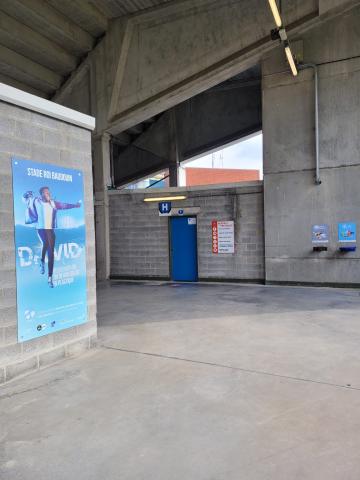
Sustainability management at King Baudouin Stadium in Brussels

About this good practice
In 2019, 140 tonnes of waste was produced in the stadium, mainly mixed, due to disadvantages and infrastructural challenges, such as the absence of sorting bins, use of single use cups and lack of awareness what costed the city.
The implementation of the good practice began in 2020 with a waste sampling. The objective was to identify hotspots and prevalent waste streams in different areas through sampling and observations. Packaging and packaging material were of special concern to assess quantities of metal, PET and other materials. It was found that out of all the collected metal cans in the three areas 64% come from public trash bins outside the stadium’s perimeter, while PET bottles and cups were prevailing inside the stadium’s perimeter (76%). Based on the results of this analysis the pilot test was further defined and it was decided to set up temporary selective collection infrastructure for the first time. It was decided to introduce only one additional bin for packaging and packaging material (PMC).
The stadium also signed a contract with a company which installs ashtrays and recuperates and recycle the cigarette butts. At the same time, meetings were held with the organisers of major events to suggest them solutions to improve sorting inside and outside the stadium what was reflected in adapted contracts.
In 2022, the stadium launched a communication campaign to raise public awareness of good sorting practices.
Expert opinion
Resources needed
Employees :
- 1 Prosport employee
- 1 Fost Plus
- 1 Brussels-Clean
- 1 Brussels-Environment
- 6 workers to install the equipment
Financial costs :
- Sorting bins : 43.219,69€ HTVA
- Ashtrays : 9.700€ HTVA + 1.440€/year emptying and recycling
- Communication campaign : 200.000€ HTVA
Evidence of success
The results were satisfactory, as the new sampling showed a redirection of 120kg of PMC from the residual waste. This basically meant that the capture rate of PMC was 83.2%, since 120 kg out of 144.21 kg of PMC was captured. It also reflected in the total amount of residual waste inside the stadium’s premises dropped to 1120 kg from 1375.17 kg.
A larger scale project followed, installing permanent infrastructure, added value concerts and different athletic competitions at the stadium.
Potential for learning or transfer
The positive aspects in the project included good collaboration with local and regional partners , good collaboration with experts, funding received to complete the project , the organisers played they part properly and finally, the change in people's behaviour.
The stadium is still working on new projects to do even better than today, as they want to create a waste sorting in the stadium to organize better the collect of waste, organic waste sorting, reusable tableware.
The replicability potential increases if baseline data is known in advance, which avoids the need of a waste composition analysis. In case of cities and regions where the environmental awareness is high, it wouldn’t take much for the visitors the get used to selective collection in stadiums and would adhere to the new practice quickly. Introduction of separate collection needs to be accompanied by communication campaigns, activities and visuals.
Further information
Images


Good practice owner
You can contact the good practice owner below for more detailed information.
